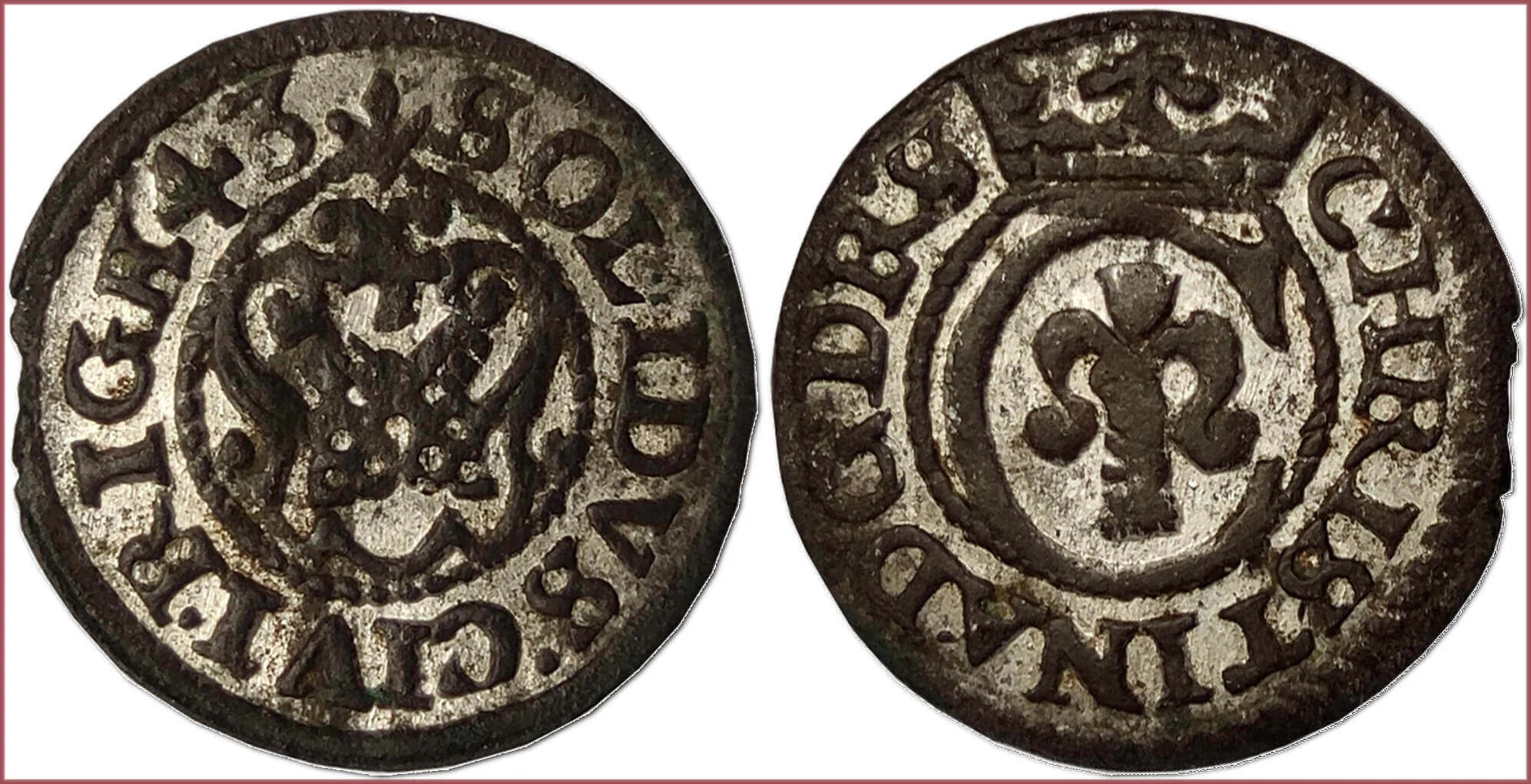SOLID: COIN OF RIGA
Solid (solidus), 1643: City of Riga (Swedish Livonia)
Ruler: Christina, Queen of Swedish Empire — a member of the House of Vasa.
SOLIDVS - CIVI - RIGE - 43 (SOLIDUS CIVITATIS RIGENSIS, 1643): the solid of the city of Riga, 1643.
A cross over the crossed keys from the coat of arms of Riga (nowadays — the capital of Latvia).
CHRISTINA - D - G - D - R - S (CHRISTINA DEI GRATIA DESIGNATA REGINA SVECIAE): Christina by the grace of God the future Queen of Sweden.
The coat of arms of the Vasa dynasty inside Christina's monogram.
- Silver: 15 mm - 0.73 g
- Reference price: 1$
COIN SOLID — WHERE & WHEN (coins catalog: by names & emitents)
- CITY OF RIGA (SWEDISH LIVONIA), 17th century: solid = 1/48 thaler
- DUCHY OF LIVONIA + LIVONIA (SWEDISH OCCUPATION), 16th-17th centuries: solid = 1/48 thaler
- DUCHY OF COURLAND AND SEMIGALLIA (LIVONIA), 16th-18th centuries: solid = 1/108 thaler
- CITY OF ELBING (POLISH-LITHUANIAN COMMONWEALTH, SWEDISH OCCUPATION), 17th century: solid = 1/3 grosz
- POLISH-LITHUANIAN COMMONWEALTH, 16th-18th centuries: solid = 1/3 grosz (some types of Polish solids in the numismatic literature have their own names — boratynka, szeląg)
- GERMAN STATES (DUCHY OF PRUSSIA, BRANDENBURG-PRUSSIA, BRANDENBURG-FRANKONIA, EPISCOPAL MINT OF HALBERSTADT, ÖTTINGEN, DOMINION OF PFALZ-MOSBACH…), 15th-17th centuries: solid (in many catalogs of coins German solids /coins bearing the name "solidus" in the legend/ are called schilling)
The name of the coin solid comes from the Latin word "solidus", which translates as "solid", "strong" or "massive".
In fact, most English-language numismatic sources do not use the term "solid" for coins — only "solidus". However, I believe that it is correct and more convenient to call the ancient gold coins of the Roman and Byzantine empires as "solidus". Whereas later medieval silver and copper coins bearing the inscriptions "Solid, Solidus", in my opinion, it is desirable to call "solid". For convenience... by analogy with the "denarius" of ancient Rome and the later medieval European "denar".
By the way, later coin's name "solidus" was transformed into a number of other numismatic terms: French sol (later — sou), Italian soldo, German schilling...

